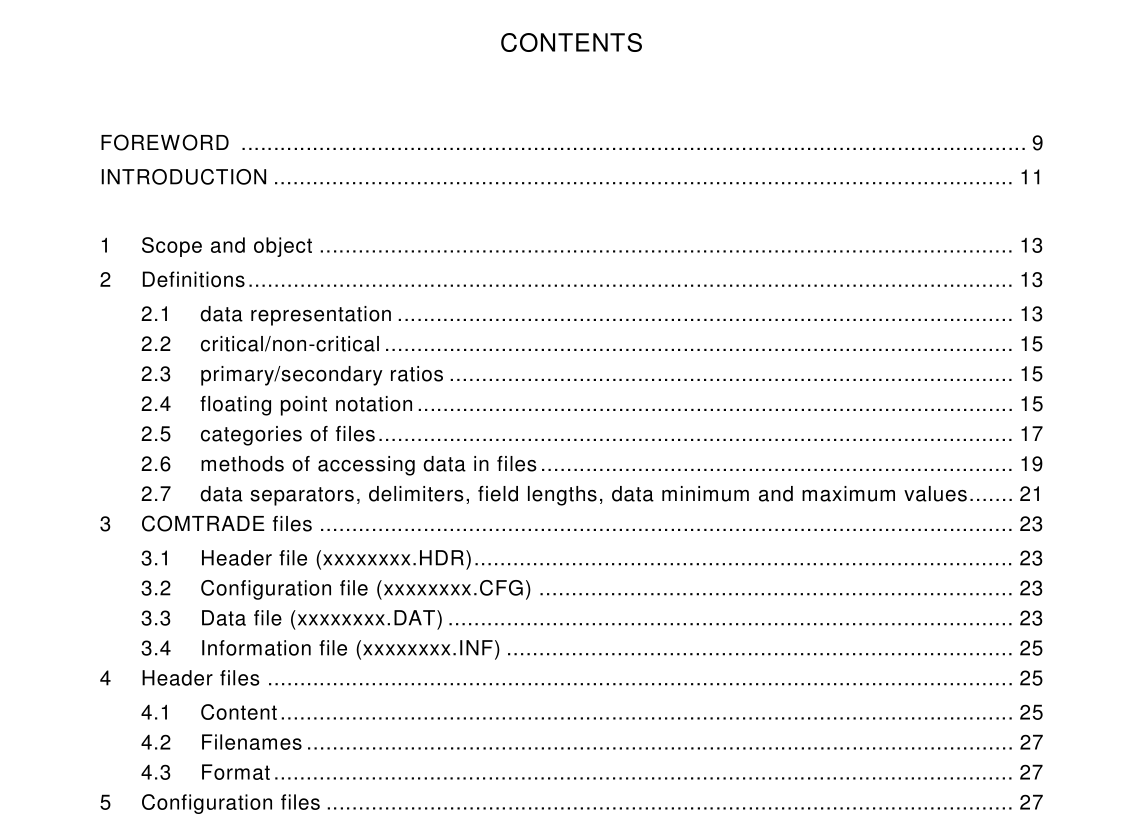IEC 60255-24 pdf download

IEC 60255-24 pdf download.Electrical relays
1 Scope and object
This part of IEC 60255 defines a format for files containing transient waveform and event data collected from power systems or power system models. This standard applies to files stored on physical media such as digital hard drives and diskettes. It is not a standard for transferring data files over communication networks. The format is intended to provide an easily interpretable format for use in exchanging data; as such, it does not make use of the economies available from data encoding and compression which proprietary formats depend on for competitive advantage.
2 Definitions
For the purpose of this part of IEC 60255, the following definitions apply. 2.1 data representations data stored in files as a series of binary bits NOTE Each bit can be either a 1 or a 0. The bits are organized in groups of 8 bits called bytes. When a computer reads the data in a file, it reads the data as a series of bytes. 2.1.1 binary data data organized in the form of bytes NOTE The 8 bits in a byte can be organized in 256 different combinations. They can be used, therefore, to represent the numbers from 0 to 255. If larger numbers are needed, several bytes can be used to represent a single number, e.g., 2 bytes (16 bits) can represent the numbers from 0 to 65535. When the bytes are interpreted in this fashion, they are known as binary data. Several different formats are in common use for storage of numeric data in binary form. 2.1.2 ASCII (American National Standard Code for Information Interchange) data symbols that match 127 of the combinations of eight binary bits NOTE As an alternative to a byte representing the numbers 0 to 255, it can be used to represent 255 different symbols. The American National Standard Code for Information Interchange (ASCII) is a standard that lists symbols that match 127 of the combinations of eight binary bits, e.g. the byte 01000001 represents an upper case “A” while 01100001 represents a lower case “a”. With 127 different combinations, it is possible 2.2 critical/non-critical some of the data in the configuration file is not absolutely necessary for the reproduction of the sample data, and some variables provided for in the configuration file may not be relevant to a particular application. Such data may be described as non-critical and may be omitted. An example of such non-critical data is the recording device channel name. However, the position normally occupied by such variables must be maintained in order to maintain the integrity of the file. If data is described as non-critical in any section of the standard, the position may be left empty or filled, using the space character, and the corresponding data separator following the preceding data separator applied with no intervening characters or spaces. Any data which is necessary for the reproduction of the sample data is termed critical. If such data is missing, the file may be unusable. 2.3 primary/secondary ratios the devices used to measure and record events on a high voltage system are not capable of directly accepting the high voltage and high currents of the power system. These devices are built to accept inputs in more manageable and less dangerous levels, termed secondary quantities. Voltage transformers and current transformers are used to reduce the voltage and current signals on the power system to these lower values. The transformer ratios are chosen so that when the power system is running at the rated or nominal primary value, the secondary value is at the nominal secondary value. The ratio is specified in primary:secondary order, the convention being that the primary is closest to the source of power. Primary ratings are available for all common voltages and load values on the power system. Common values for the secondary values are in the region of 70 V line-to-ground, and 1 A or 5 A. An ANSI/IEEE standard [12] 1) specifies the description and rating of these transformers.









